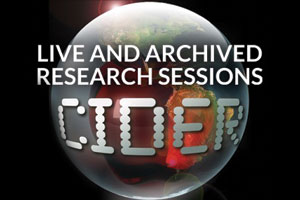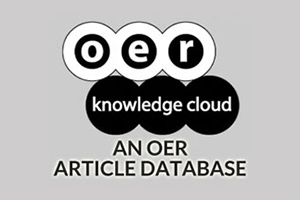Comparative Effectiveness of Approaches to Students’ Labour Education in Universities in the New Era With the Use of Information Technologies
DOI:
https://doi.org/10.19173/irrodl.v26i1.8106Keywords:
approaches to teaching, labour education, labour market, labour skills, physical labourAbstract
This study aimed to identify and compare the efficiency of different theoretical (competence-oriented) and practical (system-activity) approaches to labour education of college students in China using the Open edX online learning platform. The study was conducted at the Shengda College of Economics and Business Management. It involved 150 first-year college students and two full-time teacher-employees from the Labour Protection Department who had responsibility to ensure the quality of labour education and supervise the process of its introduction. The practical approach was 75% more effective when college students were allowed to choose work according to their preferences. The study showed that the practical approach decreased students’ motivation to work by 3%, while the average motivation with a theoretical approach was 45% higher than with a practical one, due to lack of physical work and exhaustion at work.
References
Antonelli, J., Jones, S. J., Burridge, A. B., & Hawkins, J. (2020). Understanding the self-regulated learning characteristics of first-generation college students. Journal of College Student Development, 61(1), 67–83. https://doi.org/10.1353/csd.2020.0004
Baker, R. (2018). Understanding college students’ major choices using social network analysis. Research in Higher Education, 59(2), 198–225. https://doi.org/10.1007/s11162-017-9463-1
Baker, R., Bettinger, E., Jacob, B., & Marinescu, I. (2018). The effect of labor market information on community college students’ major choice. Economics of Education Review, 65, 18–30. https://doi.org/10.1016/j.econedurev.2018.05.005
Chen, J. (2020). On the normalization of college students’ labor education in the new era. Frontiers, 1(12), 97–101. https://doi.org/10.6981/FEM.202012_1(12).0015
Chen, R., & Xie, F. (2020). Research on the influencing factors of college students’ labor education. Open Access Library Journal, 7(12), Article e7073. https://doi.org/10.4236/oalib.1107073
Damianakis, T., Barrett, B., Archer-Kuhn, B., Samson, P. L., Matin, S., & Ahern, C. (2020). Transformative learning in graduate education: Masters of social work students’ experiences of personal and professional learning. Studies in Higher Education, 45(9), 2011–2029. https://doi.org/10.1080/03075079.2019.1650735
Du, R. J., & Gao, T. (2020). Research on current situation and cultivating path of college students’ labor consciousness. Journal of Shenyang Jianzhu University (Social Science), 22, 82–86. https://www.scirp.org/reference/referencespapers?referenceid=2893460
Haijiao, X. (2018). Value crisis of labor education and its solution. Journal of the National Institute of Education Administration, 1, 1–6. http://epc.swu.edu.cn/info/1127/3196.htm
Kirkeboen, L. J., Leuven, E., & Mogstad, M. (2016). Field of study, earnings, and self-selection. The Quarterly Journal of Economics, 131(3), 1057–1111. https://doi.org/10.1093/qje/qjw019
Krupskaya, N. K. (2015). Labor education and polytechnic education. Directmedia. https://www.rulit.me/books/trudovoe-vospitanie-i-politehnicheskoe-obrazovanie-download-198214.html
Li, D. (2021). Investigation and analysis on the effect of labor education in Wenzhou Higher Vocational Colleges in the new era. International Journal of Social Science and Education Research, 4(3), 92–101. https://doi.org/10.6918/IJOSSER.202103_4(3).0015
Li, K. (2019). Evolution and review: Historical logic and realistic reconstruction of labor education. People’s Press.
Lianzhao, W. (2017). Characteristics and implementation of labor education. Chinese Journal of Education, 1, 1–7. http://epc.swu.edu.cn/info/1097/2202.htm
Liu, X. (2019). The outline of labor education in colleges and universities in the new era. People’s Press. https://marxism.ssap.com.cn/book/1875945
Lv, S. (2022). Effective combination of intelligent information technology and labor education data analysis algorithms. In Z. Xu, S. Alrabaee, O. Loyola-González, X. Zhang, N. D. W. Cahyani, & N. H. Ab Rahman (Eds.), Cyber Security Intelligence and Analytics. CSIA 2022. (pp. 61–69). Springer International. https://doi.org/10.1007/978-3-030-96908-0_8
Mansurjonovich, J. M. (2022). Current status of the science of informatics and information technologies in the professional education system, existing problems and solutions, principles and content of the science organization. Galaxy International Interdisciplinary Research Journal, 10(12), 327–331. https://internationaljournals.co.in/index.php/giirj/article/view/3039
Meng, S., Tao, F., & Han, L. (2020). The joint development of college labor education and quality education based on the new era. In S. Bhattacharyya & X. Yan (Chairs), Proceedings: 2020 International Conference on Computers, Information Processing and Advanced Education (CIPAE) (pp. 53–56). IEEE. https://doi.org/10.1109/CIPAE51077.2020.00021
Nabiullina, L. Y., Abdullina, D. A., & Kuzyashev, A. N. (2020). David McClelland and his contribution to the development of management theory. Scientific Electronic Journal Meridian, 4, 87–89. https://meridian-journal.ru/site/article6a50/
Phillippe, K. A., & González Sullivan, L. (2017). National profile of community colleges: Trends & statistics. American Association of Community Colleges. https://files.eric.ed.gov/fulltext/ED494034.pdf
Scott-Clayton, J. (2015). The shapeless river. Does a lack of structure inhibit students’ progress at community colleges? In B. L. Castleman, S. Schwartz, & S. Baum (Eds.), Decision making for student success: Behavioral insights to improve college access and persistence (pp. 102–123). Taylor & Francis. https://doi.org/10.4324/9781315767932
Stevens, A. H., Kurlaender, M., & Grosz, M. (2019). Career technical education and labor market outcomes evidence from California community colleges. Journal of Human Resources, 54(4), 986–1036. https://doi.org/10.3368/jhr.54.4.1015.7449R2
Volchek, D., Romanov, A., & Mouromtsev, D. (2017). Towards the semantic MOOC: Extracting, enriching and interlinking e-learning data in Open edX platform. In P. Różewski & C. Lange (Eds.), Knowledge Engineering and the Semantic Web. KESW 2017. (pp. 295–305). Springer. https://doi.org/10.1007/978-3-319-69548-8_20
Wang, G. (2017). Wang Guangya corpus. Henan People’s Press.
Wang, Y., & Wang, T. (2020). Research on the optimization of the path of labor education for college students. China Higher Education Research, 8, 67–70. https://www.whc.edu.cn/info/1027/1121.htm
Wen, L. (2021). Labor education in primary and secondary schools in the new era based on modern information technology. Journal of Contemporary Educational Research, 5(11), 89–94. https://doi.org/10.26689/jcer.v5i11.2753
Wiswall, M., & Zafar, B. (2015). Determinants of college major choice: Identification using an information experiment. The Review of Economic Studies, 82(2), 791–824. https://doi.org/10.1093/restud/rdu044
Xi, J. (2017, October 18). Secure a decisive victory in building a moderately prosperous society in all respects and strive for the great success of socialism with Chinese characteristics for a new era. 19th CPC National Congress, Beijing, China. http://www.xinhuanet.com/english/download/Xi_Jinping's_report_at_19th_CPC_National_Congress.pdf
Xia, Q., & Liu, X. (2019). Connotation analysis and system construction of labor education in colleges and universities in the new era. China Higher Education Research, 1, 1–9.
Xinhua. (2018, September 9). President Xi attends National Education Conference and delivers keynote speech. http://en.moe.gov.cn/News/Top_News/201809/t20180910_348093.html
Xu, C. (2018). The logic of the redevelopment of labor education in the new era. Educational Research, 11, 12–17. https://deyu.usst.edu.cn/_upload/article/files/f8/d4/8c26ca3e4a19802b23a1a93bad6f/1034e050-11b2-4ac5-834e-46393d193c7b.pdf
Yang, Z. (2020). Reflections on the difficulties and solutions of current labor education. Journal of Heilongjiang Teacher Development Institute, 6, 1–6.
Ying, X., & Zheng, Y. (2018). Approaches and methods of college students’ labor education. Journal of Mudanjiang University, 1, 1–5. https://doi.org/10.3969/j.issn.1008-8717.2018.06.043
Zhang, G. (2020). How to carry out college students’ labor education with the help of the internet during the holidays: A case study of Yiban’s Column “Taste of Eating Light”. Science and Technology Perspective, 317, 65–67. https://www.scirp.org/reference/referencespapers?referenceid=2893458
Zhang, J., Yang, C., & Hu, Q. (2019). The practice and thinking of college students’ labor education in the new era. In M. F. Ahmad, J. Lin, & W. Liu (Eds.), 2019 4th International Conference on Humanities Science and Society Development (ICHSSD 2019) (pp. 414–419). Atlantis Press. https://doi.org/10.2991/ichssd-19.2019.84
Zhejin, Y. (2019). The characteristics and realization of labor education in colleges and universities in the new era. Jiangsu Higher Education, 1, 1–5. https://deyu.usst.edu.cn/_upload/article/files/01/2d/869713e64d24b74438d077f9095d/f2702cd7-9106-4512-b327-78844e760182.pdf
Published
How to Cite
Issue
Section
License

This work is licensed under a Creative Commons Attribution 4.0 International License.
This work is licensed under a Creative Commons Attribution 4.0 International License. The copyright for all content published in IRRODL remains with the authors.
This copyright agreement and usage license ensure that the article is distributed as widely as possible and can be included in any scientific or scholarly archive.
You are free to
- Share — copy and redistribute the material in any medium or format
- Adapt — remix, transform, and build upon the material for any purpose, even commercially.
The licensor cannot revoke these freedoms as long as you follow the license terms below:
- Attribution — You must give appropriate credit, provide a link to the license, and indicate if changes were made. You may do so in any reasonable manner, but not in any way that suggests the licensor endorses you or your use.
- No additional restrictions — You may not apply legal terms or technological measures that legally restrict others from doing anything the license permits.







